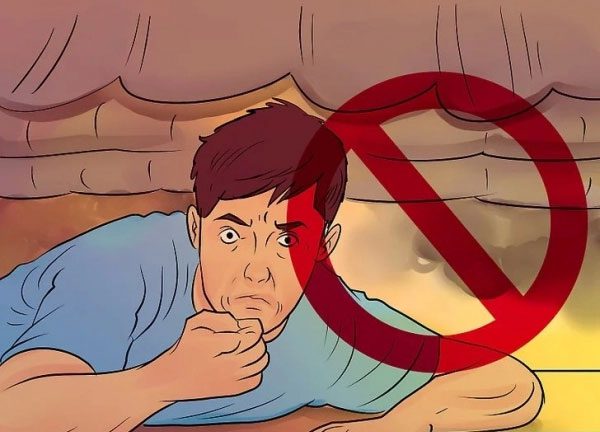Many people believe that during a house fire, one should hide in a closet or bathroom to avoid smoke and gas inhalation while waiting for rescue. Is this correct or incorrect?
Answer:
From a scientific standpoint, hiding in enclosed spaces like a closet or bathroom during a fire is not an optimal strategy; it is even counterproductive.
In a closed room, even if cold water is sprayed or ventilation fans are used, breathable air will gradually diminish once toxic gases such as carbon monoxide (CO), hydrogen cyanide (HCN), and carbon dioxide (CO2) infiltrate. Victims face the risk of suffocation due to lack of breathable air, and their lungs may inhale toxic fumes, leading to severe bodily harm.

Hiding in a closet during a fire is not an optimal strategy and can be considered scientifically unsound. (Illustrative image).
These toxic gases often cause neurological symptoms. In mild cases, victims may experience headaches, nausea, and vomiting. In severe instances, they may become disoriented, dizzy, confused, or even suffer from shortness of breath, chest pain, unconsciousness, or death.
If the fire is extinguished quickly or if the toxic gases have not infiltrated too much and do not cause oxygen deprivation, hiding in a closet may be seen as a way to prolong survival until help arrives.
If the fire lasts for an extended period, victims in a closet or bathroom are at serious risk of suffocation and life-threatening conditions. Even covering the mouth with a wet cloth can only reduce smoke inhalation but cannot prevent toxic gas poisoning.
In the event of a fire, you should crouch down, sit, or crawl close to the floor, as this area typically contains less toxic air. Dampen a cloth or fabric to cover your nose and mouth to minimize inhalation of gases and suffocation. People can run to a balcony or another open area to call for help.
Once rescued from a fire, victims need to be given oxygen immediately to ensure their bodies receive adequate oxygen supply. Medical professionals will check vital signs, assess any injuries, and then transfer them to a hospital for further evaluation.
Dr. Nguyễn Huy Hoàng
Vietnam-Russia Hyperbaric Oxygen Center
Vietnam-Russia Tropical Center, Ministry of Defense


















































